Performance Properties and Finite Element Modelling of Forest-Based Bionanomaterials/Activated Carbon Composite Film for Sustainable Future
Abstract
:1. Introduction
2. Materials and Methods
2.1. Materials
2.2. Preparation of Hydroxyethyl Cellulose/Activated Carbon Composite Films
2.3. Measurements and Characterization
2.4. Numerical Modeling
3. Results and Discussion
3.1. Numerical Modelling and Mechanical Properties of the Composite Films
3.2. Thermal Conductivity of the Composite Films
3.3. Thermal Stability of the Composite Films
3.4. Viscoelastic Properties of the Composite Films
3.5. Morphological Properties of the Composite Films
4. Conclusions
- It was observed that tensile strength decreased and elongation at break increased as the amount of activated carbon increased in the composite formulations. Thus, the mechanical properties of HEC are improved by obtaining a more flexible material with the addition of activated carbon.
- The thermal conductivity of the composites reached its highest value with the use of 1 wt.% activated carbon. No significant change was observed in thermal conductivity values by adding more activated carbon.
- It was observed that the char yield of the composites increased together with the increase in the activated carbon ratio in the composites. The increase in char yield prevents the flame from passing into the inner parts of the material and increases the resistance of the material to burning. In this respect, activated carbon has improved the thermal properties.
- The dynamic mechanical analysis results showed that as the activated carbon content increased, the storage modules increased, the glass transition temperature decreased and the optimum activated carbon content was 3%.
- SEM images show that the activated carbon additive is distributed homogeneously in the resulting composite films.
Author Contributions
Funding
Data Availability Statement
Conflicts of Interest
References
- Salama, A. Recent progress in preparation and applications of chitosan/calcium phosphate composite material. Int. J. Biol. Macromol. 2021, 178, 240–252. [Google Scholar] [CrossRef] [PubMed]
- Yan, J.; Huang, Y.; Liu, X.; Zhao, X.X.; Li, T.; Zhao, Y.; Liu, P. Polypyrrole-Based Composite Materials for Electromagnetic Wave Absorption. Polym. Rev. 2021, 61, 646–687. [Google Scholar] [CrossRef]
- Zeng, Q.; Liu, Y.; Shen, L.; Lin, H.; Yu, W.; Xu, Y.; Li, R.; Huang, L. Facile preparation of recyclable magnetic Ni@filter paper composite materials for efficient photocatalytic degradation of methyl orange. J. Colloid Interface Sci. 2021, 582, 291–300. [Google Scholar] [CrossRef] [PubMed]
- Omran, A.A.B.; Mohammed, A.A.B.A.; Sapuan, S.M.; Ilyas, R.A.; Asyraf, M.R.M.; Rahimian Koloor, S.S.; Petrů, M. Micro and Nanocellulose in Polymer Composite Materials: A Review. Polymers 2021, 13, 231. [Google Scholar] [CrossRef] [PubMed]
- Narita, A.; Oshima, J.; Iso, Y.; Hasegawa, S.; Tomita, Y. Red-sensitive organic nanoparticle-polymer composite materials for volume holographic gratings with large refractive index modulation amplitudes. Opt. Mater. Express 2021, 11, 614–628. [Google Scholar] [CrossRef]
- Mohammed, L.; Ansari, M.N.M.; Pua, G.; Jawaid, M.; Saiful Islam, M. A Review on Natural Fiber Reinforced Polymer Composite and Its Applications. Int. J. Polym. Sci. 2015, 2015, 243947. [Google Scholar] [CrossRef]
- Sathishkumar, T.; Satheeshkumar, S.; Naveen, J. Glass fiber-reinforced polymer composites—A review. J. Reinforc. Plast. Compos. 2014, 33, 1258–1275. [Google Scholar] [CrossRef]
- Torres, F.G.; Rodriguez, S.; Saavedra, A.C. Green Composite Materials from Biopolymers Reinforced with Agroforestry Waste. J. Polym. Environ. 2019, 27, 2651–2673. [Google Scholar] [CrossRef]
- Lu, Z.; Huang, J.; Songfeng, E.; Li, J.; Si, L.; Yao, C.; Jia, F.; Zhang, M. All cellulose composites prepared by hydroxyethyl cellulose and cellulose nanocrystals through the crosslink of polyisocyanate. Carbohydr. Polym. 2020, 250, 116919. [Google Scholar] [CrossRef]
- Şen, F.; Kahraman, M.V. Preparation and characterization of hybrid cationic hydroxyethyl cellulose/sodium alginate polyelectrolyte antimicrobial films. Polym. Adv. Technol. 2018, 29, 1895–1901. [Google Scholar] [CrossRef]
- Şen, F.; Uzunsoy, İ.; Kahraman, M.V. Hydroxyethyl cellulose-based indicator labels to track freshness of anchovy (Engraulis encrasicolus). Color Res. Appl. Vol. 2020, 45, 962–967. [Google Scholar] [CrossRef]
- Şahan, N.; Fois, M.; Paksoy, H. The effects of various carbon derivative additives on the thermal properties of paraffin as a phase change material. Int. J. Energy Res. 2016, 40, 198–206. [Google Scholar] [CrossRef]
- Küçükgül, E.Y. Ticari aktif karbon üretimi ve özelliklerinin belirlenmesi. Dokuz Eylül Üniversitesi Mühendislik Fakültesi Fen Ve Mühendislik Derg. 2004, 6, 41–56. [Google Scholar]
- Bhosale, R.R.; Pujari, S.R.; Lande, M.K.; Arbad, B.R.; Pawar, S.B.; Gambhire, A.B. Photocatalytic activity and characterization of sol–gel-derived Ni-doped TiO2-coated active carbon composites. Appl. Surf. Sci. 2012, 261, 835–841. [Google Scholar] [CrossRef]
- Om Prakash, M.; Gujjala, R.; Panchal, M.; Ojha, S. Mechanical characterization of arhar biomass based porous nano activated carbon polymer composites. Polym. Compos. 2020, 41, 3113–3123. [Google Scholar] [CrossRef]
- Zor, M.; Şen, F.; Candan, Z.; Ivanov, E.; Batakliev, T.; Georgiev, V.; Menseidov, D. Preparation and Characterization of Polyvinyl Alcohol (PVA)/Carbonized Waste Rubber Biocomposite Films. Polymers 2024, 16, 1050. [Google Scholar] [CrossRef]
- Kocatürk, E.; Şen, F.; Zor, M.; Candan, Z. Development and Characterization of Nanocellulose/Carbonized Waste Rubber Nanocomposites. BioResources 2024, 19, 2670–2684. [Google Scholar] [CrossRef]
- Zor, M.; Kocatürk, E.; Şen, F.; Oran, B.; Candan, Z. Characterization of nanocellulose/pyrolysis oil nanocomposite films. Maderas-Cienc. Tecnol. 2024, 26, 1–10. [Google Scholar] [CrossRef]
- Qi, L.; Tian, W.; Zhou, J. Numerical evaluation of effective elastic properties of composites reinforced by spatially randomly distributed short fibers with certain aspect ratio. Compos. Struct. 2015, 131, 843–851. [Google Scholar] [CrossRef]
- Segurado, J.; Llorca, J. A numerical approximation to the elastic properties of sphere-reinforced composites. J. Mech. Phys. Solids 2002, 50, 2107–2121. [Google Scholar] [CrossRef]
- Gibson, R.F. Principles of Composite Material Mechanics, 4th ed.; CRC Press: Boca Raton, FL, USA, 2016. [Google Scholar]
- Marsh, H.; Rodriguez-Reinoso, F. Activated Carbon; Elsevier: Amsterdam, The Netherlands, 2006. [Google Scholar]
- Valente, M.; Sarasini, F.; Marra, F.; Tirillo, J.; Pulci, G. Hybrid recycled glass fiber/wood flour thermoplastic composites: Manufacturing and mechanical characterization. Compos. Part A 2011, 42, 649–657. [Google Scholar] [CrossRef]
- Yim, Y.-J.; Kim, B.-J. Preparation and Characterization of Activated Carbon/Polymer Composites: A Review. Polymers 2023, 15, 3472. [Google Scholar] [CrossRef] [PubMed]
- Lay, M.; Rusli, A.; Abdullah, M.K.; Abdul Hamid, Z.A.; Shuib, R.K. Converting dead leaf biomass into activated carbon as a potential replacement for carbon black filler in rubber composites. Compos. Part B 2020, 201, 108366. [Google Scholar] [CrossRef]
- Mohmad, M.; Abdollah, M.F.B.; Khudhair, A.; Tamaldin, N.; Amiruddin, H.; Mohamad Zin, M.R. Physical-mechanical properties of palm kernel activated carbon reinforced polymeric composite: Potential as a self-lubricating material. J. Tribol. 2018, 17, 77–92. [Google Scholar]
- Hanif, M.P.M.; Jalilah, A.J.; Badrul, F.; Nuraqmar, S.M.S. The influence of graphite on conductivity, crystallinity and tensile properties of hydroxyethyl cellulose (hec)/graphite composite films. IOP Conf. Ser. Mater. Sci. Eng. 2019, 701, 012015. [Google Scholar] [CrossRef]
- Verma, R.; Nagendra, H.N.; Kasthurirengan, S.; Shivaprakash, N.C.; Behera, U. Thermal conductivity studies on activated carbon based cryopanel. IOP Conf. Ser. Mater. Sci. Eng. 2019, 502, 012197. [Google Scholar] [CrossRef]
- Firooz, S.; Steinmann, P.; Javili, A. Homogenization of Composites with Extended General Interfaces: Comprehensive Review and Unified Modeling. Appl. Mech. Rev. 2021, 73, 040802. [Google Scholar] [CrossRef]
- Firooz, S.; Chatzigeorgiou, G.; Steinmann, P.; Javili, A. Extended general interfaces: Mori–Tanaka homogenization and average fields. Int. J. Solids Struct. 2022, 254–255, 111933. [Google Scholar] [CrossRef]
- Saeb, S.; Steinmann, P.; Javili, A. Aspects of computational homogenization at finite deformations: A unifying review from Reuss’ to Voigt’s bound. Appl. Mech. Rev. 2016, 68, 050801. [Google Scholar] [CrossRef]
- Şen, F.; Kahraman, M.V. Hybrid dual-curable cyanate ester/boron phosphate composites via sequential thiol-ene photopolymerization and thermal polymerization. Prog. Org. Coat. 2014, 77, 1053–1062. [Google Scholar] [CrossRef]
- Abdul Khalil, H.P.S.; Jawaid, M.; Firoozian, P.; Zainudin, E.S.; Paridah, M.T. Dynamic Mechanical Properties of Activated Carbon–Filled Epoxy Nanocomposites. Int. J. Poly. Anal. Charac. 2013, 18, 247–256. [Google Scholar] [CrossRef]
- Tohamy, H.A.S.; El-Sakhawy, M.; El-Masry, H.M.; Saleh, I.A.; Abdel Mohsen, M.M. Preparation of hydroxyethyl cellulose/mangiferin edible films and their antimicrobial properties. BMC Chem. 2022, 16, 113. [Google Scholar] [CrossRef] [PubMed]
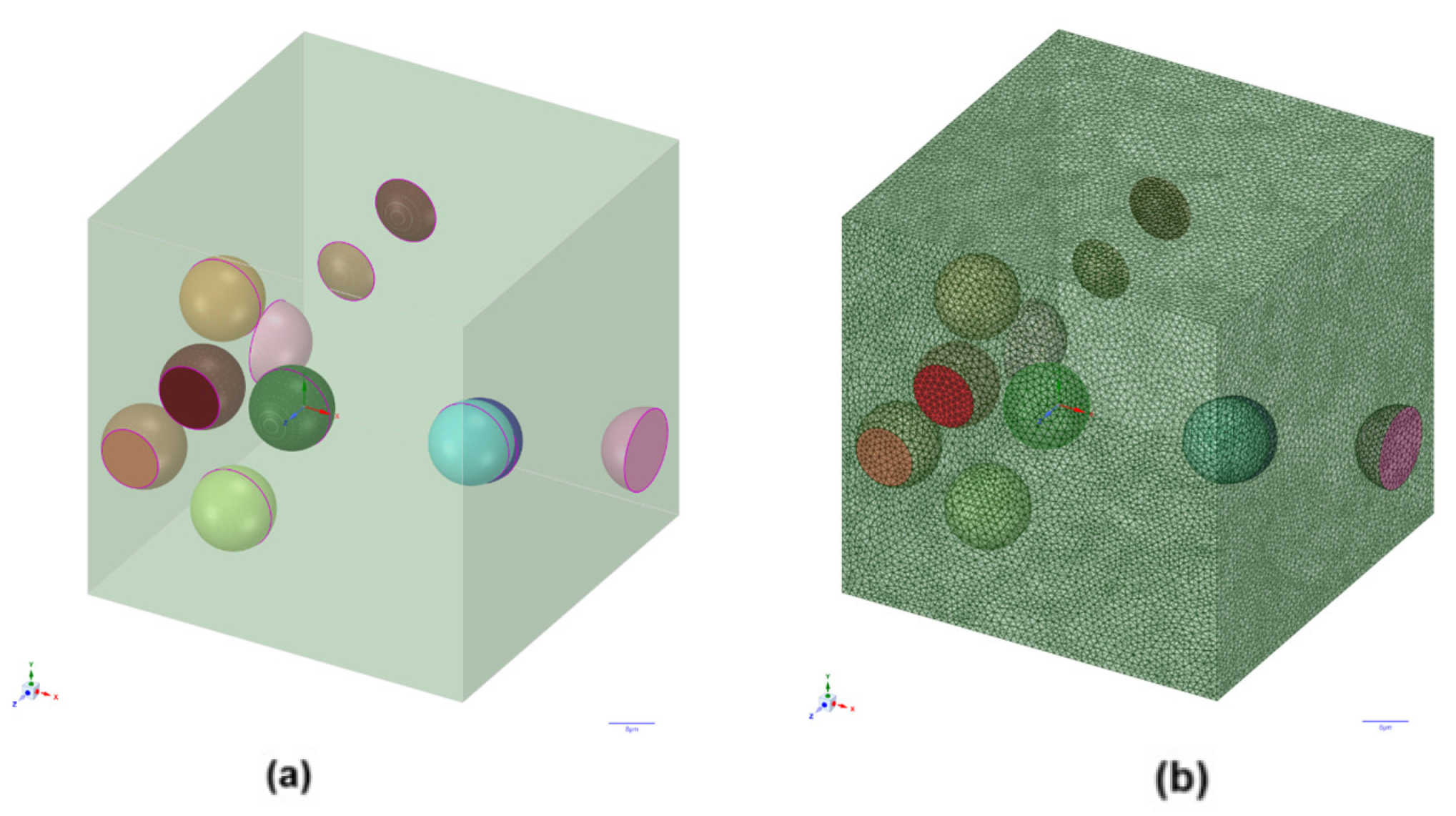
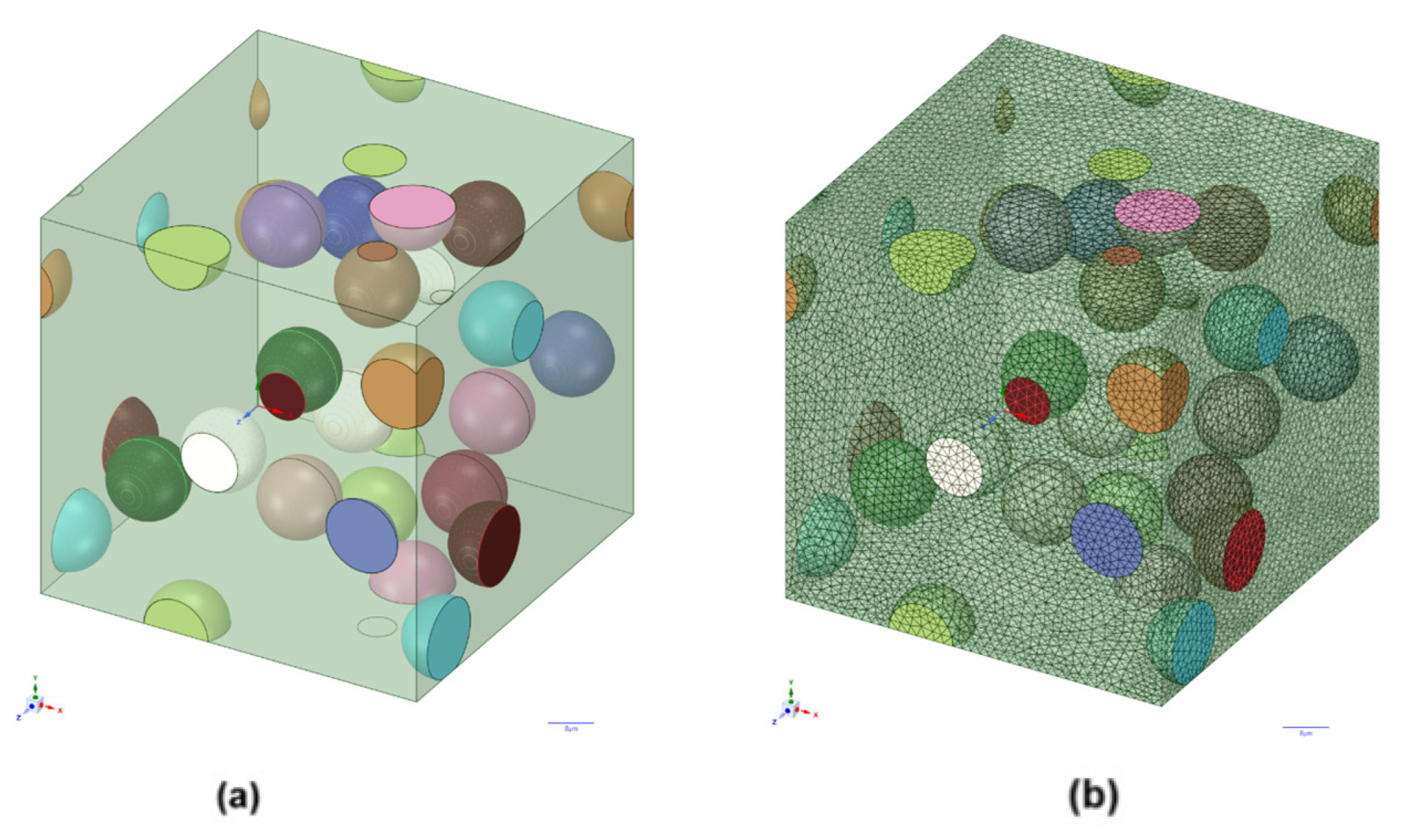

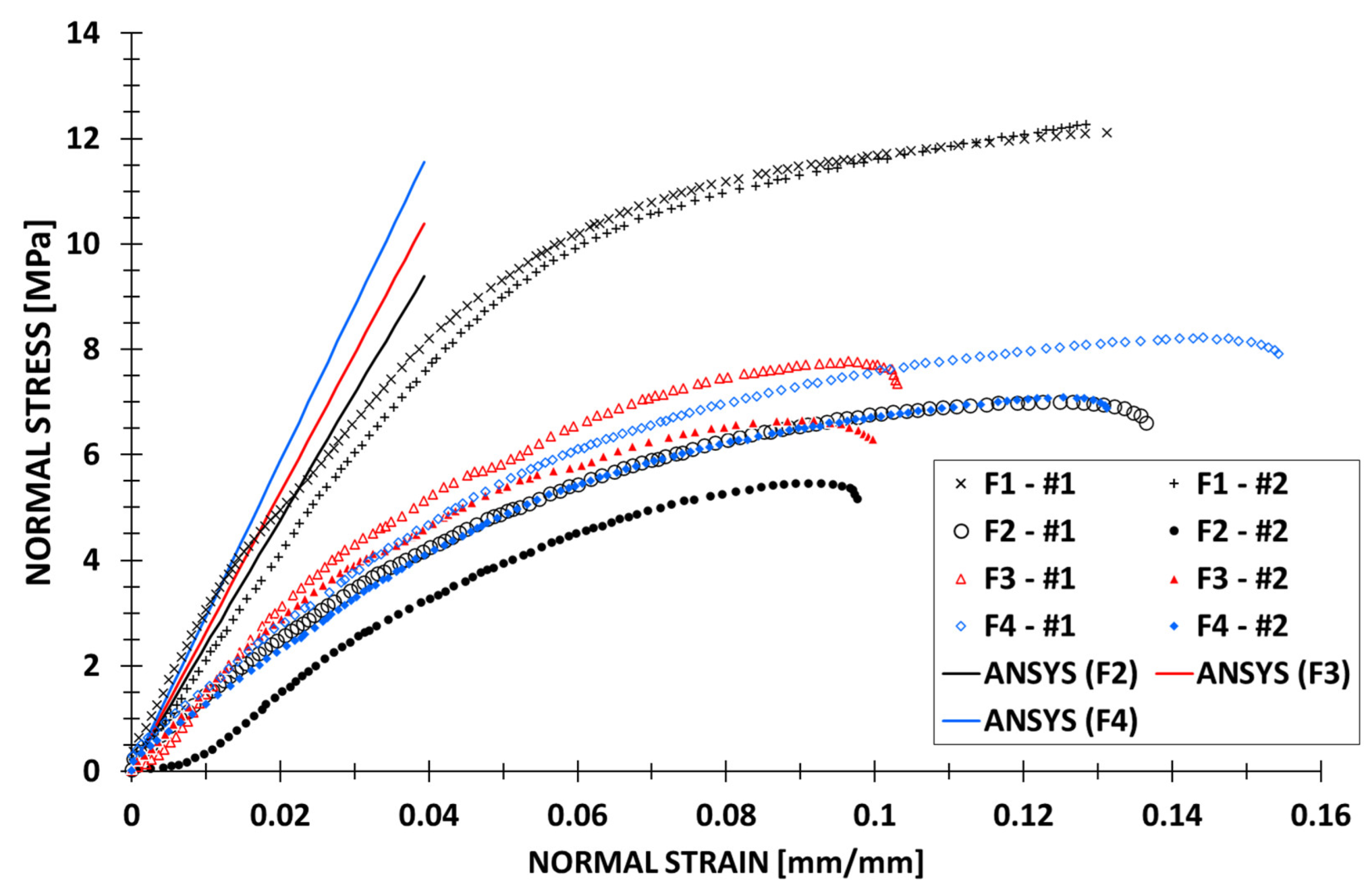
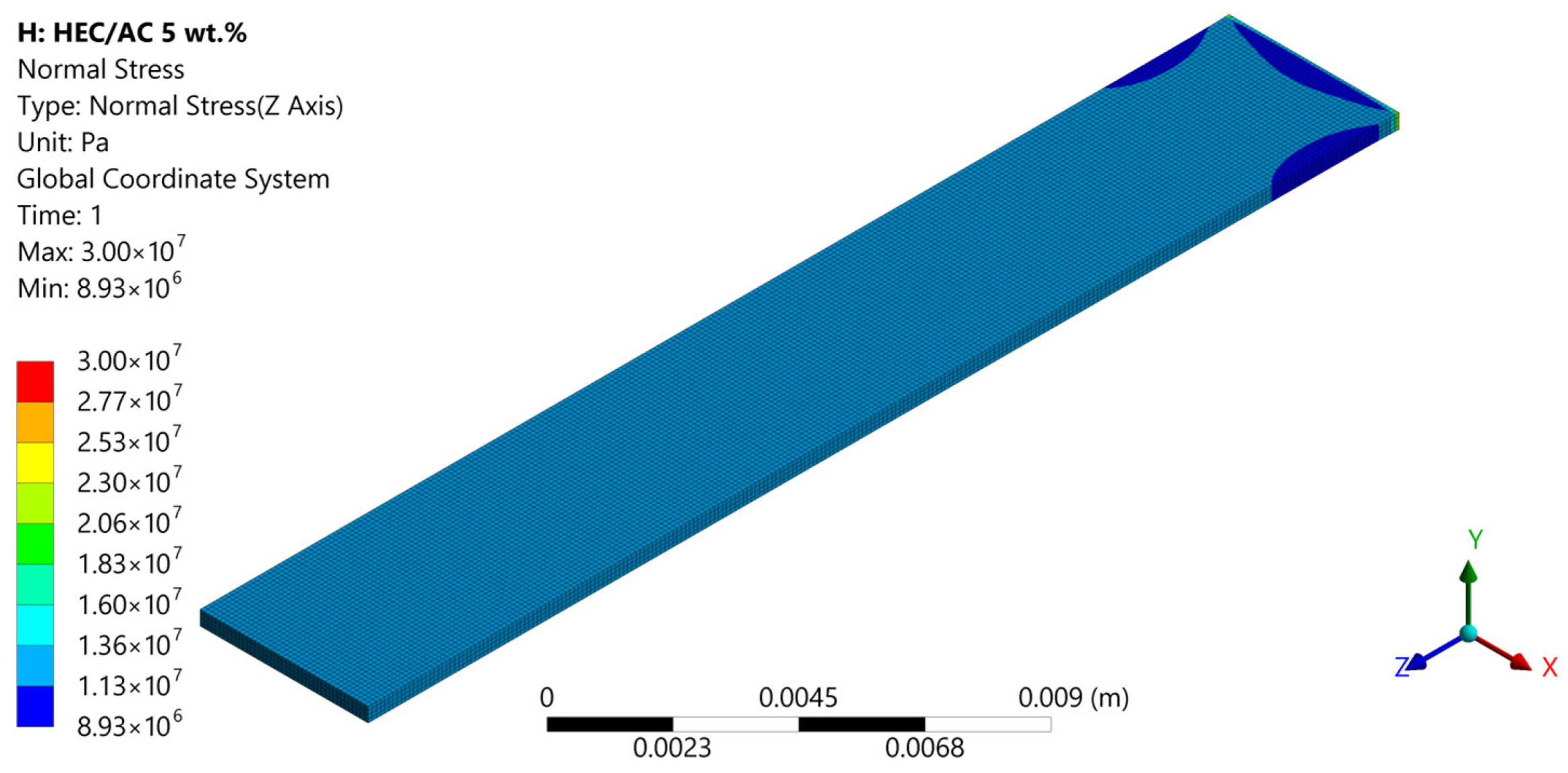
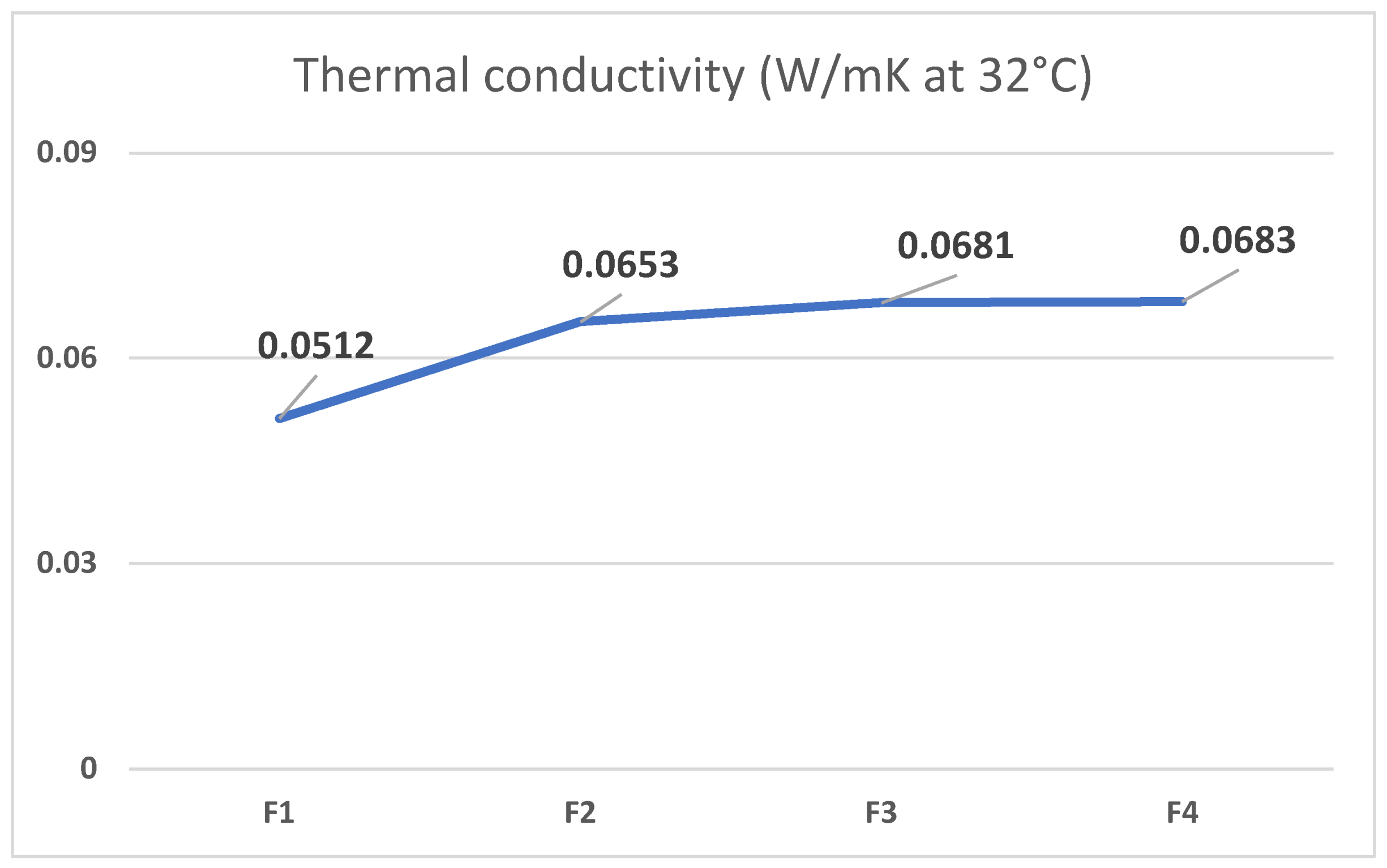



| Sample | Density, ρ (g/cm3) | Modulus of Elasticity, E (GPa) | Poisson’s Ratio, ν |
|---|---|---|---|
| HEC | 1.067 | 0.2225 | 0.35 |
| AC | 0.5 | 10 | 0.3 |
| Modulus of Elasticity, E (MPa) | Poisson’s Ratio, ν | |
|---|---|---|
| F2 (1 wt.%) | 237.93 | 0.347 |
| F3 (3 wt.%) | 263.30 | 0.343 |
| F4 (5 wt.%) | 292.63 | 0.335 |
| Sample | Activated Carbon Content (wt.%) | Tensile Strength (MPa) | Modulus of Elasticity (MPa) | Elongation at Break (%) |
|---|---|---|---|---|
| F1 | 0 | 12.39 ± 0.17 | 232.5 ± 5.4 | 13.28 ± 0.03 |
| F2 | 1 | 6.73 ± 0.07 | 123.1 ± 3.2 | 11.91 ± 0.06 |
| F3 | 3 | 7.33 ± 0.05 | 168.3 ± 4.8 | 10.63 ± 0.09 |
| F4 | 5 | 7.94 ± 0.07 | 131.2 ± 3.1 | 14.33 ± 0.05 |
| Samples | Thermal Conductivity (W/mK) |
|---|---|
| F1 | 0.051 |
| F2 | 0.650 |
| F3 | 0.681 |
| F4 | 0.683 |
| Samples | T10% (°C) | Max. Weight Loss (°C) | Char Yield (%) |
|---|---|---|---|
| F1 | 171.65 | 346.56 | 14.21 |
| F2 | 266.52 | 335.35 | 19.02 |
| F3 | 266.15 | 328.20 | 20.69 |
| F4 | 269.31 | 331.52 | 21.33 |
| Samples | Initial Storage Modulus (MPa) 30 °C | E′ (MPa) 50 °C | E′ (MPa) 100 °C | E′ (MPa) 150 °C | Tg (°C) |
|---|---|---|---|---|---|
| F1 | 23.83 | 7.59 | 3.41 | 3.35 | 144.71 |
| F2 | 16.89 | 7.99 | 4.85 | 4.15 | 136.37 |
| F3 | 206.13 | 40.70 | 19.37 | 5.03 | 108.12 |
| F4 | 184.24 | 31.51 | 16.80 | 2.82 | 110.87 |
Disclaimer/Publisher’s Note: The statements, opinions and data contained in all publications are solely those of the individual author(s) and contributor(s) and not of MDPI and/or the editor(s). MDPI and/or the editor(s) disclaim responsibility for any injury to people or property resulting from any ideas, methods, instructions or products referred to in the content. |
© 2024 by the authors. Licensee MDPI, Basel, Switzerland. This article is an open access article distributed under the terms and conditions of the Creative Commons Attribution (CC BY) license (https://creativecommons.org/licenses/by/4.0/).
Share and Cite
Zor, M.; Şen, F.; Özçelik, O.; Yazıcı, H.; Candan, Z. Performance Properties and Finite Element Modelling of Forest-Based Bionanomaterials/Activated Carbon Composite Film for Sustainable Future. Forests 2024, 15, 1591. https://doi.org/10.3390/f15091591
Zor M, Şen F, Özçelik O, Yazıcı H, Candan Z. Performance Properties and Finite Element Modelling of Forest-Based Bionanomaterials/Activated Carbon Composite Film for Sustainable Future. Forests. 2024; 15(9):1591. https://doi.org/10.3390/f15091591
Chicago/Turabian StyleZor, Mustafa, Ferhat Şen, Orhan Özçelik, Hikmet Yazıcı, and Zeki Candan. 2024. "Performance Properties and Finite Element Modelling of Forest-Based Bionanomaterials/Activated Carbon Composite Film for Sustainable Future" Forests 15, no. 9: 1591. https://doi.org/10.3390/f15091591







